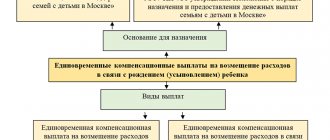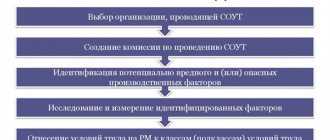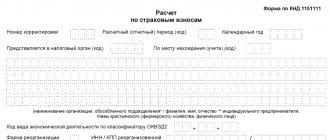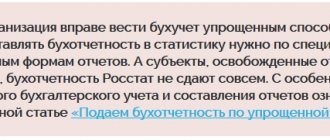07.09.2019
0
742
4 min.
The Labor Code establishes rules for employers to organize workplaces taking into account ensuring maximum safety of personnel. But there are also professions for which harmful working conditions are an integral part of the work process. What measures does the Labor Code provide for employees in this category, and whether they are entitled to additional benefits, we will find out in the article.
How to determine how harmful production is
In order to determine how harmful or dangerous production is and how these factors affect workers, workplaces are certified. This process affects all jobs that exist in the enterprise.
What if the organization has recently started its activities? In this case, certification is carried out 2 months after the start of work.
For each workplace, it is determined to what extent it complies with safety and labor protection requirements, and to what extent workers are provided with protective equipment. An assessment of working conditions in the complex is also carried out.
Harmful to healthcare workers
Medical institutions often use part-time workers. If the staff is not fully staffed, then a number of functions and responsibilities are assigned to the existing staff in the clinic. This form of cooperation under a contract is provided for by law and regulated by the provisions of Article 60.2 of the Labor Code. Different jobs may be subject to different levels of “harmfulness.” In this case, how to calculate and pay the due compensation for harm from medical workers?
Article of the Labor Code of the Russian Federation No. 117 regulates the rules for issuing additional leaves. If the workplace assessment classifies it as at least 3.2, the medical worker is entitled to additional leave. Previously, according to the industry list, all employees of medical institutions had the right to 6.12 or 18.30 or more working days in addition to the main leave. Now this norm is not legitimate.
VUT factors
Divided into several groups. We will look at each in more detail.
Chemical.
Associated with various chemicals. mixtures, enzymes, hormones and biological substances that are obtained as a result of chemical synthesis.
Physical.
- Humidity;
- Radiation;
- Vibration;
- Dust;
- Lighting (insufficient or excessive), uneven, with pulsation.
Biological.
- Presence of microorganisms, bacteria;
- Related to biological mixtures and substances
Labor.
- Intensity of activity;
- High duration of the work process;
- Level of severity of work.
Harmfulness standard
The standards by which production can be called harmful include the following factors::
- excessive, also known as an increased amount of dust both on the territory and in the work premises - as a result, it can settle in the lungs, causing difficulty in the functioning of the respiratory system;
- problems with lighting - this has a depressing effect on the psyche and also has a bad effect on the functioning of the visual organs;
- loud noise;
- radiation of different spectrum;
- constant vibrations;
- increased indoor humidity combined with high temperatures;
- risks of interaction with bacteria and viruses, as well as various chemical components and toxic substances;
- hard labour.
To make all these formulations more understandable, it is worth studying the list of professions approved at the state level that correspond to the description of “harmful”. This will allow you to understand what to expect from production.
How are they classified?
It is clear that difficult working conditions can cause negative consequences of various types: loss of ability to work, exacerbation of existing diseases, acquisition of work-related diseases, and so on.
The degrees of harmful working conditions are divided as follows:
- Class 1: these are conditions that provoke various functional changes. At the same time, health is restored when a person stops contacting harmful factors;
- Grade 2: changes in the body become sustainable and lead to the appearance of prof. diseases;
- Class 3: these conditions can cause loss of ability to work (albeit temporary) during activities;
- 4th grade: such conditions provoke the development of prof. severe diseases, stimulate the development of existing diseases and can cause complete loss of ability to work.
The Russian Federation has developed and operates a list of hazardous work. It is he who is turned to when it is necessary to determine the harmfulness of working conditions in a particular industry.
Sample referral for medical examination
——————————————————————¬¦ Limited Liability Company “PHARMAPRO” ¦¦ ¦¦ Referral for periodic (preliminary) ¦¦ medical examination ¦¦ ¦¦ Last name , name, patronymic: Nikolaev Alexander Mikhailovich ¦¦ Date of birth: October 22, 1966 ¦¦ Workshop, area: antibiotic production workshop ¦¦ Harmful factors (according to Appendix No. 1 to Order No. 83):¦¦ chemical, antibiotics (production , application) (1.3.8.1) ¦¦ Work experience in these conditions: no ¦¦ ¦¦ Ivanova ¦¦ Signature: Head of the HR Department ——— T.N.
Ivanova¦¦ ¦¦ June 22, 2007 ¦¦ ¦¦ M.P. ¦L—————————————————————— The referral form is filled out in a similar manner when employees undergo periodic medical examinations.
List of sources
- pensionology.ru
- trud.guru
- isf-consultant.ru
- WiseEconomist.ru
- exjurist.ru
List of professions with hazardous working conditions
This register is valid for the current year. Initially, it was developed and consolidated in the USSR.
It includes the following range of professions:
- Persons who work in enterprises related to the mining industry;
- Working in the field of metallurgy;
- Mining ferrous and non-ferrous metals;
- Persons employed in enterprises producing thermoanthracite, coke and coke chemicals;
- Those who produce generator gas;
- Workers creating dinas products;
- Employees of companies with chemical activities;
- Working with ammunition, gunpowder, explosives;
- Employees of oil refineries;
- Employees of gas processing enterprises;
- Persons processing coal, gas condensate and oil shale;
- Employed in metalworking enterprises;
- Persons employed in electrical production and repairing electrical devices;
- Persons engaged in the manufacture of electronics and radio equipment;
- Persons who create glass and porcelain objects;
- Citizens working with synthetic fibers;
- Employees of enterprises producing paper and pulp;
- Working in healthcare institutions;
- Transport service employees;
- Persons who deal with substances containing radioactivity;
- Carrying out activities in the field of nuclear industry and energy;
- Divers;
- Gas cutters;
- Welders who work inside the tank or compartments of the vessel;
- Persons who interact with dangerous germs;
- Specialists in etching metal in hazardous solutions;
- Specialists who clean metal with quartz sand;
- Specialists of mercury substations;
- Citizens who are employees of power plants;
- Employees of enterprises related to the food industry;
- Those involved in the restoration, repair and construction of objects;
- Employees of enterprises in the field of communication services;
- Workers of agricultural organizations interacting with agrochemicals;
- Chemical industry training specialists;
- Mining Training Specialists;
- Coal Industry Training Specialists;
- Lime slakers;
- Locksmiths;
- Vulcanizers;
- Stokers;
- Solderers;
- Machinists;
- Varnishers.
The persons listed on this list are citizens entitled to benefits.
Harmful to healthcare workers
special assessments are recognized as safe or acceptable;
with the consent of the trade union.
whose work is associated with the danger of infection with Mycobacterium tuberculosis; AIDS prevention and control institutions working with radioactive substances and sources of ionizing radiation; psychiatric, drug treatment organizations; ambulance stations; organizations of the state sanitary and epidemiological service; blood transfusion stations; interacting with radioactive substances and sources of ionizing radiation. Depending on the positions held, additional paid leave is granted once a year to:
- 14-35 days - for health workers providing psychiatric care;
- 14-21 days - for health workers providing anti-tuberculosis care;
Who cannot work in positions with VUT
There are a number of restrictions on the performance of official duties of this kind. Moreover, these restrictions are established by the legislation of the Russian Federation.
In accordance with it, restrictions apply to the following persons:
- For employees who are under 18 years of age;
- For persons with health problems;
- For females. In particular, they cannot work with mercury, in boiler rooms, in jobs where they need to manually move heavy objects, or in servicing equipment in heavy engineering enterprises.
The employer provides personal protective equipment
Personal or personal protective equipment is used to reduce or prevent the entry of harmful, toxic or dangerous substances into the human body.
The following means of protection are distinguished:
- overalls (suit, overalls, robe, underwear, cap) and safety footwear (shoes, boots);
- technical means that can protect from: mechanical impact (helmet, gloves), bright lighting or sparks (mask, glasses), noise (ear plugs, headphones), toxic steam or harmful emissions (gas mask, respirator), electric shock (dielectric mats and mittens, stands);
Creams, ointments, and detergents against aggressive effects on the skin should be mandatory companions for workers both at home and at work.
The employer is obliged:
- independently purchase protective equipment for your own personnel;
- monitor the availability and promptly replenish missing materials;
- monitor their expiration date;
- ensure easy access to them in critical cases.
Of course, no one relieves the employer of responsibility. But even in hazardous industries, no one will stand by and check how correctly the employee fulfills the requirements of the instructions, since he is primarily interested in compliance with it.
Harmful working conditions in an employment contract
If the profession involves the possibility of causing damage to a person’s health or life, the following clauses must be included in the employment contract:
- Information on the payment of benefits, compensation and leave to the employee;
- Information about all existing risks (with their classification);
- Information about the measures that the employer takes to preserve the life and health of its employees.
In addition to this information, the contract specifies all the guarantees that are provided to the employee.
The working hours, which are reduced, must be specified. It should not be more than 36 hours per week. Maximum daily work can last 8 hours or even 6.
Converting working days to calendar days
The duration of paid vacations for employees is calculated in calendar days (Part 1 of Article 120 of the Labor Code of the Russian Federation). According to the List, additional leave is calculated in working days. When calculating the total duration of annual paid leave, additional paid leaves are summed up with the annual main paid leave (Part 2 of Article 120 of the Labor Code of the Russian Federation). How to calculate the duration of the entire vacation (main plus additional) is stated in Letter of the Ministry of Labor of Russia dated 02/01/2002 N 625-ВВ.
The calculation of the duration of annual paid leave is as follows.
- The number of calendar days of the main vacation is counted from the start date of the vacation.
- Next, count the number of days of additional leave in working days based on a 6-day working week.
- Determine the date of the last day of vacation.
- The total vacation period is converted into calendar days.
Non-working holidays falling during the vacation period are not included in the number of calendar days of vacation. The amount of vacation pay is calculated according to the rules established by Art. 139 of the Labor Code.
Example 3. Let's use the data from example 1. It is necessary to determine the duration of the entire vacation of A.I. Ogonkova.
Solution. From the start date of the vacation - June 4, 2007, we count 28 calendar days, excluding the holiday - June 12, 2007. The main vacation ends on July 2, 2007. From the start date of the additional vacation - July 3, 2007, we count 13 working days according to the calendar of a 6-day working week. The last day of additional leave is July 17, 2007. The total number of calendar days from June 4 to July 17, 2007 is 44 days, and with the exception of June 12, 2007 - 43 days.
Employee rights
Persons who work in enterprises with harmful and difficult working conditions have a number of rights and benefits.
Therapeutic and preventive nutrition, obtaining vitamins.
Food and vitamins are provided to employees absolutely free. Issued on the day that the person actually worked, or when the employee lost his ability to work, but was not hospitalized.
Meals can be provided as breakfast or lunch.
Milk.
Milk is issued free of charge if the employee writes a request for this, or the issue can be replaced with compensation if this does not contradict the collective agreement.
Passing a medical examination.
An employee engaged in dangerous and harmful work not only has the right, but also the obligation to undergo a medical examination. The procedure for passing is regulated by regulatory documents.
In addition, some categories of workers are examined by a psychiatrist. It is carried out once every 5 years. It is usually carried out if a person works with harmful substances or with sources that pose an increased danger.
Availability of PPE.
The employer provides special clothing, shoes, disinfectants and cleaning agents. All this is at his expense, and is free for employees. In addition, he is obliged to ensure that clothes are washed, dried, and replaced.
Granting a pension before the appropriate age.
Men who are 50 years old and women who are 45 years old have the right to retire early. In this case, it is taken into account the conditions under which they carried out their work activities. If a person worked in a hot shop or other jobs with harmful or difficult working conditions, he can take advantage of this right.
What professions can qualify for a preferential pension will be discussed below.
| No. | Field of activity | Requirements |
| 1 | Agricultural production | Men working as machinists can retire at 50 |
| 2 | Healthcare | Regardless of gender and age, if you have 25 years of work experience in a village or 30 years in an urban environment |
| 3 | Educational field | For teachers, 25 years of experience is enough to accrue a preferential pension. |
| 4 | Textile industry | The retirement age is reduced if a woman has worked for 20 years |
| 5 | FSIN system | For men - age 55 years and experience 15 years, for women - 50 years and experience 10 years |
| 6 | Civil aviation and fishing industry | For men - 25 years of experience, for women - 20 years, and age 55 and 50 years |
| 7 | Fire service, Ministry of Emergency Situations | Similar to the previous paragraph |
| 8 | Public transport workers | For female and male drivers - age 55 and 50 years, experience - 20 and 15 years |
| 9 | Underground production | For men - age 50, if he has worked in this field for 10 years, and has a total experience of 20 years. For women - 7 years in this field, total experience - 15 years. She can retire at 45 |
| 10 | Persons working as locomotive and diesel locomotive drivers | Men – 25 years of experience, age 55, women – 20 years of experience, age 50 |
| 11 | Workers in the field of geological exploration | Men – age 55, experience 12.5 years, women – age 50, experience – 10 years |
The Pension Fund of the Russian Federation may require a certificate confirming the harmfulness of the profession. It must be taken at the place of work.
Compensation and benefits
If harmful factors in working conditions cannot be eliminated at a given enterprise, then employees are entitled to certain benefits. A minimum set of rights and compensations is established by law, which can be expanded by the employer’s decision. Additional privileges are prescribed in a collective or employment agreement, and are also enshrined in internal regulations.
Mandatory workers' rights include:
- Reducing working hours;
- Extension of annual leave;
- Passing periodic examinations in medical institutions at the expense of the employer;
- Accident insurance for the duration of work;
- Additional salary bonus;
- Providing special food or compensation corresponding to the amount of its cost;
- Assignment of early pensions.
Pension benefits
Early retirement is due to representatives of professions, a full list of which is fixed by law. Depending on the position and length of service, the employee receives the right to apply for a pension several years earlier than other citizens of the Russian Federation. It should be remembered that this benefit is provided only if there are additional contributions to the Pension Fund of the Russian Federation.
Submission and collection of documents for the assignment of pension payments can begin one month before termination of employment. In addition to standard documents, the Pension Fund of the Russian Federation will need to provide a certificate confirming harmful working conditions. The certificate is drawn up in free form at the place of work of the future pensioner and is certified by the seal of the organization and the signature of the manager.
If the harmfulness of professional activity at the enterprise is not confirmed, then employees can apply to the courts to order and conduct an extraordinary inspection. The results of court proceedings affirm the rights of citizens to early pension provision.
Harmful working conditions must be confirmed by expert assessments of a special commission. Employers should ensure maximum reduction and elimination of hazards through modern means that promote personal protection and improved equipment for employees.
Working citizens are advised to carefully monitor the proper fulfillment by employers of the obligation to pay additional contributions that allow early retirement. If the conditions for special deductions are not met, problems with the citizen’s social security will arise in the future. The company may cease to operate by the time the pension is issued, so it will be difficult to prove and collect the due amounts of money.
Leave for hazardous working conditions
To receive this leave, a person’s workplace must be classified as hazard class 2, 3 or 4. Then this right is prescribed immediately upon concluding an employment contract.
If workplace certification was carried out before 2014, such employees may also qualify for additional compensation. vacation.
Any employee has the right to know whether the working conditions in which he works are harmful. To do this, after the certification, management familiarizes all employees with its results against signature.
When determining the duration of such leave, it must be taken into account that it cannot be less than seven calendar days. But you can set a larger number of days on an individual basis.
So that the main and additional leave can be arranged, a vacation schedule is initially developed, which is logical. The manager decides whether it will contain specific dates, or whether only the month in which the employee will go on vacation is indicated.
If an employee performing hazardous work is a part-time worker in a particular organization, he also has the right to additional compensation. vacation. But its duration will be calculated based on how much he actually worked in production with harmful or dangerous working conditions.
Cannot replace additional vacation with financial compensation. Payment of compensation is allowed only if the person did not use his vacation. Then upon dismissal he will receive money.
Who is entitled to a preferential disability pension?
All conditions of professional activity are divided into three types:
- acceptable,
- dangerous,
- harmful.
The last two types are often the cause of the development of occupational diseases. People who work in such conditions may retire earlier. The list of hazardous professions for early retirement is extensive. It mainly consists of workers performing work:
- in the carpentry industry,
- when working underground and in mines,
- at logging,
- in the coal industry,
- in the navy,
- in textile factories,
- in rescue teams,
- in printing.
Preferential pension provision according to lists No. 1 and 2
The procedure for calculating pensions is determined by Federal Law 400-FZ “On Insurance Pensions”. An employee will be accrued a preferential pension if the employer has made contributions to the state for all the years. There is no additional increase in the level of contributions. The size of the pension can be higher only taking into account the fact that wages in hazardous industries are higher compared to other areas.
Starting from 2015, the employer must pay an insurance payment of at least 9% of the employee’s income to the fund, otherwise the length of service will not be counted as work in hazardous working conditions. Due to changes in the retirement age, under the new legislation, persons who were previously supposed to retire in July 2021, and according to the new rules in January 2021, will be sent to retire six months earlier, that is, according to the old deadlines.
Thus, these lists play a significant role in the lives of many workers. They are important for arranging early retirement and related payments. They are no less interesting for the employer to know how to properly organize production activities.
Categories of hazards in production according to the Labor Code of the Russian Federation
Occupational safety and health is an important part of the labor process, without which the corporation cannot properly structure the work process. There are several categories of hazardous working conditions that take into account environmental factors and employee workplace standards.
Determination of dangerous and harmful production factors
There is such a thing as a hazardous production factor - this is a combination of working conditions under which an employee faces damage to his own health and even life.
Harmful production factors of labor are those classes of work process that do not comply with occupational health and safety standards and can cause significant harm to the health of an employee during prolonged contact or a shift work schedule.
Classification of working conditions by degree of harmfulness
According to the labor code and labor hazard categories, there are several classes according to which division is carried out according to the list:
- Normal working conditions at the enterprise, according to the grid and hazard class.
- Acceptable class for hazardous conditions.
- Harmful conditions, according to a specific division grid. In turn, this category is divided into several more classes.
- Extremely dangerous, according to the hazards of work.
The concept of optimal conditions (grade 1)
According to the Labor Code of the Russian Federation, optimal conditions in a corporation include those factors that cannot change the microclimate parameters at work and affect human health parameters. The professions that are on this list are suitable for pregnant women and minors, as they are very suitable for work and do not harm human health.
What are the acceptable working conditions in production (grade 2)
The list of conditions of class 2 is described by the labor code as completely safe for short-term effects on the body.
However, if exposure is not limited, it is likely that harmful production factors affect the body and cause damage to systems and organs.
In practice, it occurs in enterprises in which the work process alternates with regulated rest, in accordance with the law.
What does the concept of harmful working conditions include? (3rd grade)
This class according to the list of hazards includes violations of occupational health, as well as changes in standards according to labor protection.
With prolonged exposure to these factors, a person feels a significant impact on himself from production processes, as well as emissions. Also, this category can indirectly influence the offspring of employees.
This class includes several degrees that are extremely different from each other.
Degree of hazards in production
According to existing categories, there are:
- Class 1, which includes functional changes and disorders of various organs and systems. With short-term exposure to these factors, the human body is able to quickly recover to its previous state.
- Class 2 includes the appearance of so-called occupational diseases that affect vulnerable organs by direct influence on them.
- Category 3 brings with it not only functional changes, but also pathologies that arise during prolonged contact with hazardous factors.
- Category 4 is characterized by partial loss of ability to work and the presence of severe forms of chronic diseases that were acquired as a result of working at this enterprise.
1 industrial hazard grid
The grid of harmful factors is presented by the following list of professions:
- Drivers of trucks and passenger vehicles involved in the production process.
- Textile workers.
- Employees who are involved in the machine process and automotive production workers.
- Drivers of minibuses and public transport.
Occupational hazards - 2nd grid
The list includes workers of the following professions:
- Nuclear industry workers.
- Mining company employees.
- Workers involved in electrical equipment.
- Metallurgical industry.
3 degree of harmfulness
If we note the 3rd degree of harm, then it includes not only significant changes in the body of a particular employee, but also the occurrence of pathologies, which, alas, cannot be cured. Work that falls within this spectrum can render a person unable to work for a long period of time.
4th degree of harmfulness of working conditions in production
Based on the comprehensive information in the Labor Code of the Russian Federation, it can be noted that this degree brings irreversible changes in the human body.
With prolonged exposure to these production factors, the employee may become disabled.
In this case, the employee is entitled to early retirement and corresponding benefits.
Law on the abolition of hazardous work - amendments to the Labor Code of the Russian Federation
According to the amendments made to the law on classes of hazardous factors in enterprises, the government decided to reduce the list of professions that give the right to early release from work. This measure will help reduce a certain burden on the budget and economic situation in the country during the crisis.
Source: https://classomsk.com/zashhita-prav-rabotnika-i-rabotodatelya/kategorii-vrednosti-na-proizvodstve-po-tk-rf.html









